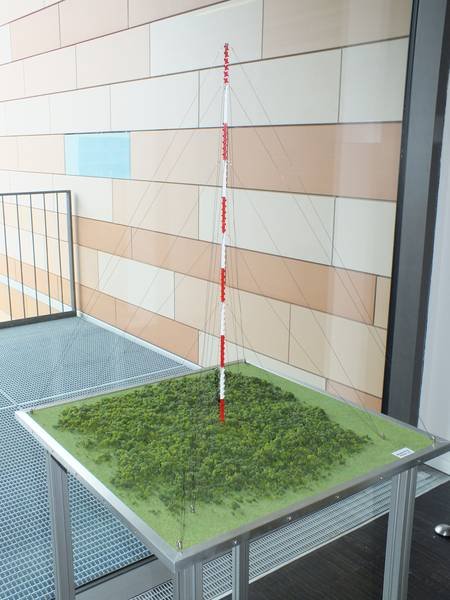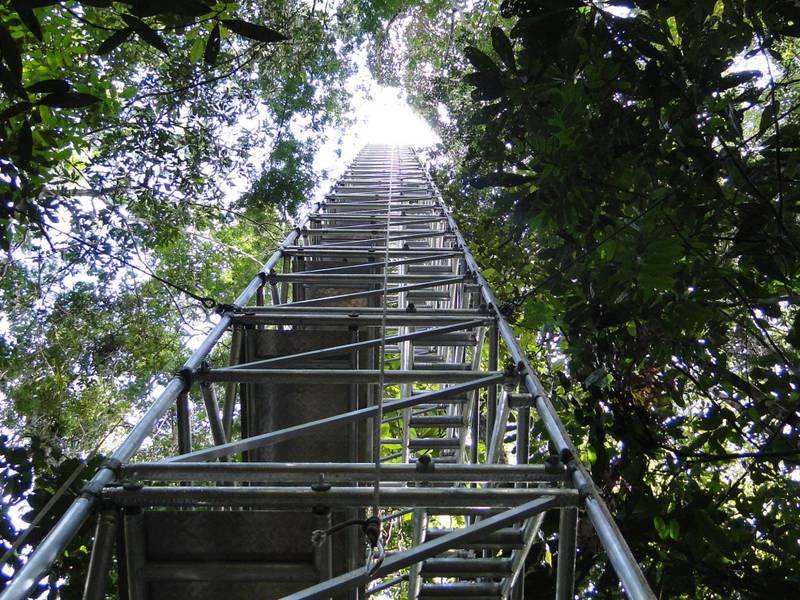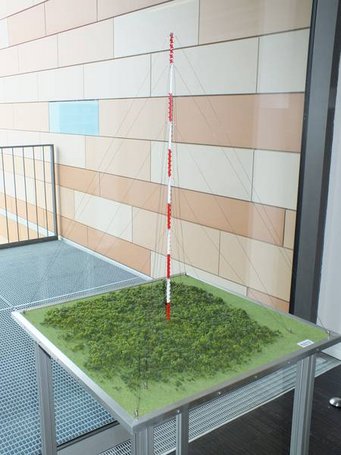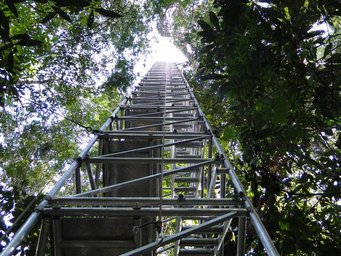Research in the Rainforest

Station 14
The Amazon region in South America is not only one of the most species-rich regions on the planet. Covering more than seven million square kilometres, the rainforest is also the largest continuous forested area.
It was only a few years ago that the rainforest’s ability to create its own clouds was discovered. At the heart of this process are aerosols, tiny particles made up largely of organic material that serve as condensation nuclei for clouds. The particles are emitted into the air by jungle vegetation. By implication, this would mean: no forest, no more rain.
The MPI for Chemistry has been conducting regular measurement campaigns in the jungle at ATTO, the Amazon Tall Tower Oberservatory,for a number of years. In addition to improving our understanding of how clouds form naturally, they also serve as a reference point for how humans are influencing cloud formation and precipitation. As well as aerosols and their influence on the climate, the Amazonian rainforest has a variety of other research topics to offer: Scientists conduct precise analyses of its carbon and nitrogen cycles, investigate the exchange of greenhouse gases and reactive trace gases between soil, vegetation and the atmosphere and determine the impact of vegetation fires on ecology and air pollution.

300 meters over the rainforest

"ATTO" stands for Amazonian Tall Tower Observatory. The German-Brazilian joint project was launched in 2009 and is coordinated by the Max Planck Institute for Chemistry. The tower aims at delivering groundbreaking findings which will be the basis for improved climate models. With a height of 325 meters the tower extends the ground-level boundary layer, and provides information taken from approximately 100 squarekilometers from the world´s largest forest area.
The Amazon region is of global significance: it produces big amounts of oxygen, impacts the water cycle through evaporation and stabilize the climate.
ATTO is the counterpart of the 2006 completed ZOTTO tower that stands in Siberia and the the Max Planck Institute of Chemistry is also involved. ATTO is integrated into an existing structure of smaller Brazilian measuring towers. The cost for the construction of ATTO including the first five years of running costs is estimated to be 8.4 million €. which will be financed by Germany and Brazil in equal parts.
From the German side, the project coordination took place in the start phase from 2010 to 2017 by Prof. Dr. J. Kesselmeier in collaboration with Prof. Dr. M.O Andreae at the MPI for Chemistry, since June 1, 2017 by Prof. Dr. S. Trumbore from the MPI for Biogeochemistry, Jena, in collaboration with Prof. Dr. U. Pöschl from the MPI for Chemistry. Current information: www.attoproject.org


